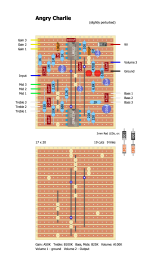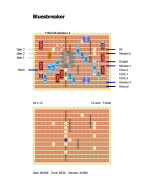I really wanted to build my first stripboard circuit, so I decided to go for the Shin's Music Dumbloid special, using Tagboard effects layout.
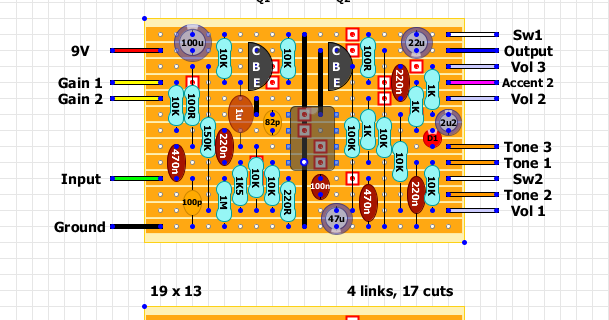
 tagboardeffects.blogspot.com
tagboardeffects.blogspot.com
As for many others of my build, I choose to clone the original pedal cosmetically:
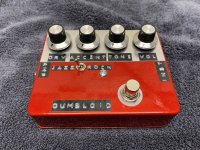
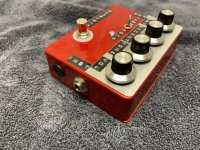
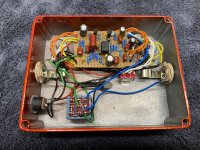
The circuit came out great I think, apart from the 1uF electrolytic that was really too big to fit. The offboard wiring is really a rat's nest. I need to get better at routing all these wires.
Overall the sound doesn't convince me 100%, regardless of the hype behind this pedal. And I don't think it is related to my build, as a friend of mine owns the original pedal and it sounds exactly the same. In some circumstances, it's a great overdrive, but more often than not it sounds quite fizzy and harsh.
I'll experiment with some clipping diodes I think.
Meanwhile, I will definitely build more stripboard circuits as it was a lot of fun.

Shin's Music Dumbloid Special
Collection of vero (stripboard) & tagboard layouts for 100s of popular guitar effects, with over 1000 verified designs. DIY your own boutique effects!
As for many others of my build, I choose to clone the original pedal cosmetically:



The circuit came out great I think, apart from the 1uF electrolytic that was really too big to fit. The offboard wiring is really a rat's nest. I need to get better at routing all these wires.
Overall the sound doesn't convince me 100%, regardless of the hype behind this pedal. And I don't think it is related to my build, as a friend of mine owns the original pedal and it sounds exactly the same. In some circumstances, it's a great overdrive, but more often than not it sounds quite fizzy and harsh.
I'll experiment with some clipping diodes I think.
Meanwhile, I will definitely build more stripboard circuits as it was a lot of fun.


